Table of Contents
- Introduction
- Medical Disclaimer
- Why Does Your Knee Hurt?
- Fixing Your Deadlift
- Modify the Plan
- Stress Management
- Hire a professional
- Summary
Introduction
Sometimes our bodies don’t hold up as well as we wish they would.
Even just last night I went for a walk and limped the last half of it because of my knee. And I’m 28 years old! (at the time of writing this)
Why is pain such a pain?
Due to my own creaky joints, I tend to specialize in training people with aches and pains. When it comes to helping my clients, fixing poor technique is always first on my mind. Bad exercise form can stress your body in ways that your mind does NOT appreciate.
Medical Disclaimer
Exercise is not without risk, even for healthy individuals. Same goes for diet. Make sure your doctor is okay with your self-experimentation. By visiting this website, you acknowledge and agree that you have been assessed by a qualified medical professional who has given you consent to take part in physical activity.
Why Does Your Knee Hurt?
You might be thinking, “Uhh, Lance, I’ve already diagnosed that I have knee pain. What’s left to diagnose?“
Yes, you have knee pain, but WHY do you have that knee pain? As much as I’d love to just say, “Don’t let it hurt anymore,” that’s not reality.
What is knee pain?
Pain is a broad and complex topic. There are literally infinite reasons that your joint could be hurting you.
First I must say this: if it’s serious or persistent, you may need to see a doctor. I’ll give you some short-term advice here solely to fix your movement, but joint pain could be unrelated to your movement. Don’t put your health at risk because you’re stubborn. See the medical disclaimer above.
Barring anything serious, knee pain is often associated with movement dysfunction. You might be starting to think that deadlifts hurt your knees, but maybe it’s just the WAY you’re deadlifting. Sometimes switching up technique can alleviate symptoms.
If you’ve had these issues for a long time, your once “acute pain” becomes “chronic pain”. Your brain actually learns how to be in pain. It remembers. It’s actually pretty cool, but also a huge… PAIN. Hah hah.
How will you know if it’s something more serious than a movement problem?
If fixing your movement problems does not improve symptoms, you need to see an allied health professional.
Now that we’ve gotten the important stuff out of the way, here’s what I would do if one of my clients had knee pain during a set of deadlifts.
What is the deadlift?
If you’re doing them, you already know — at least vaguely — about the deadlift. Let’s make sure we’re on the same page.
We might describe the deadlift as the opposite of the squat:
- The knees don’t bend much
- Most tension is on the glutes and hamstrings (hopefully)
- Minimal quad involvement
Similar to the squat, however, the deadlift is a fundamental movement. That is, it’s something that I, as your trainer, want each and every one of my clients to do safely.
Here’s a quick intro video to the deadlift:
Analyzing your deadlift
Now there are a TON of ways to mess this up, but my goal here is to simplify this for you. We’re going to discuss the major mistakes related to knee issues.
The easiest way to do this is to prop your phone on a bench or use a cheap tripod. Set it far enough away to see your head when you’re standing.
You’ll want two views: directly from the side and directly from behind.
1) View your deadlift from the side
Round back
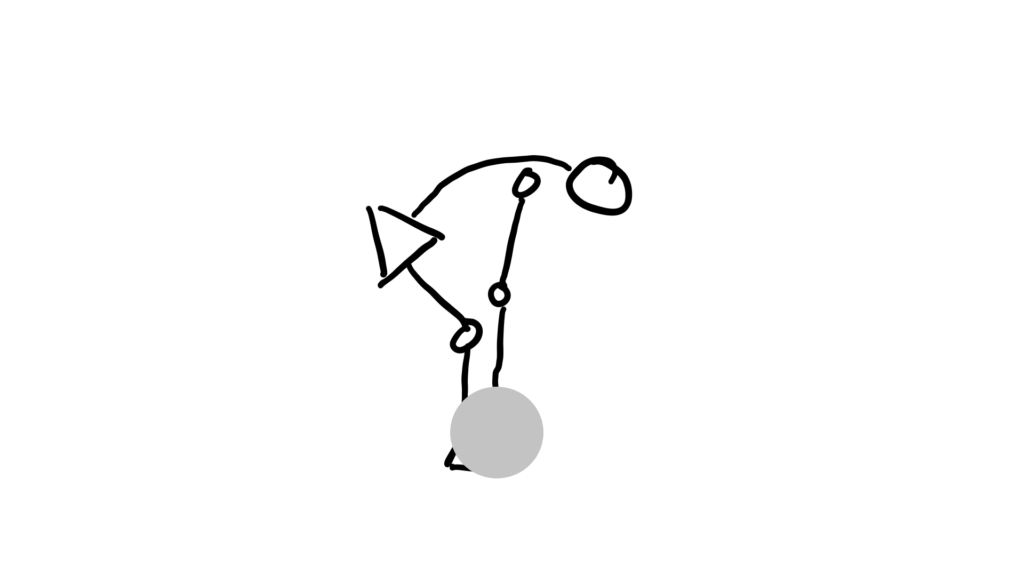
Arched back
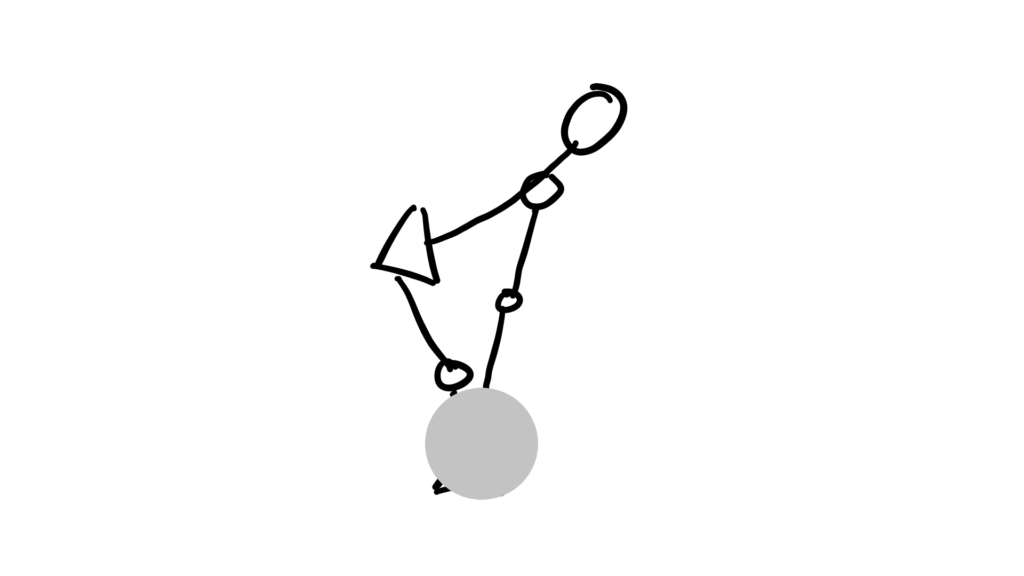
Balanced on feet
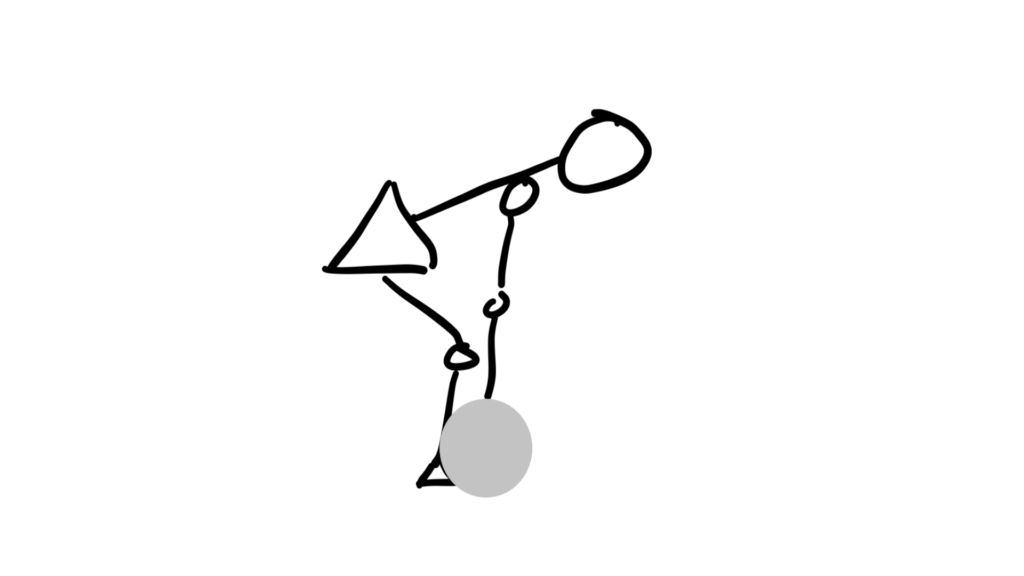
2) View your deadlift from behind
Knee caved in
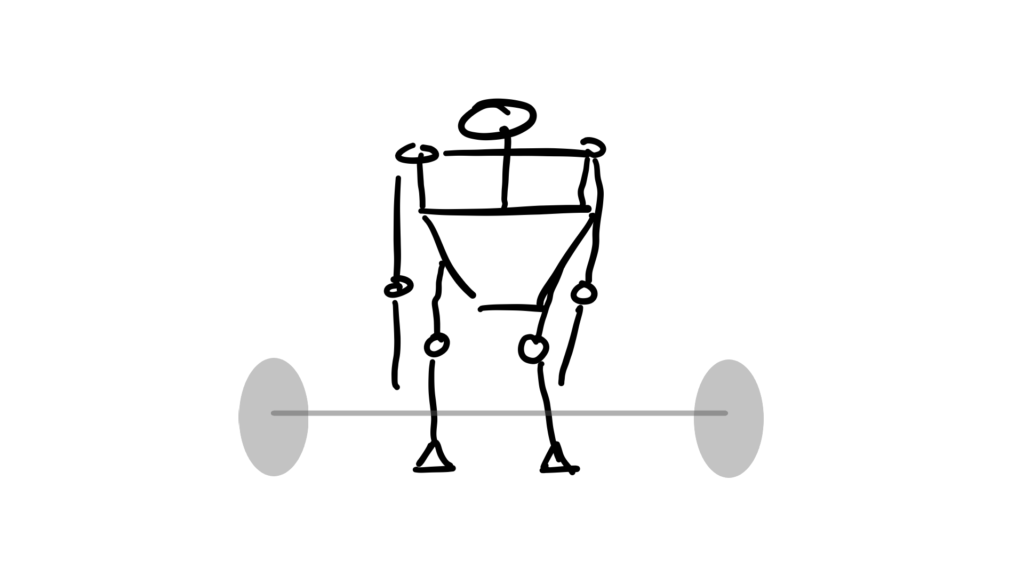
Knee splayed out
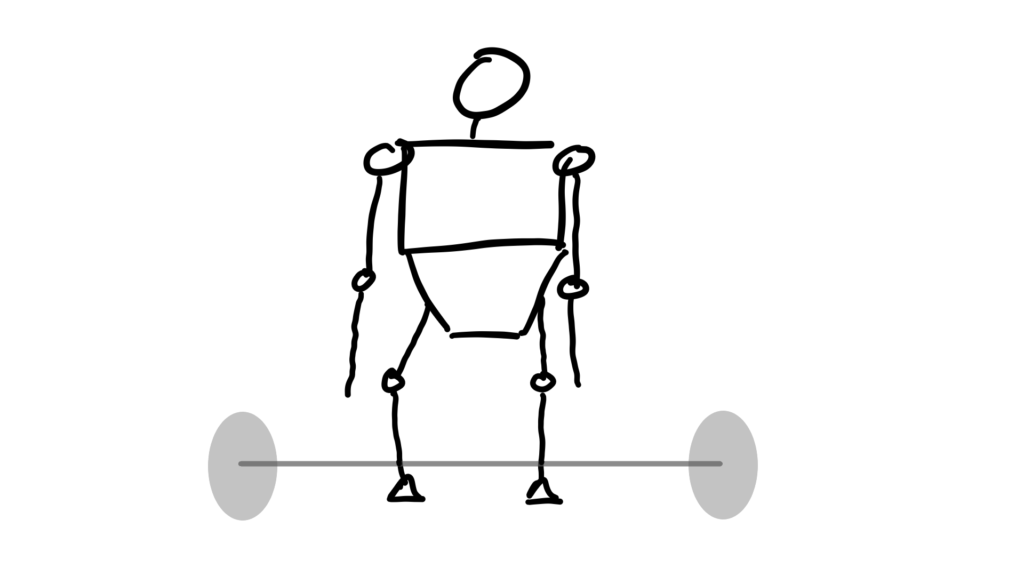
Hip shift
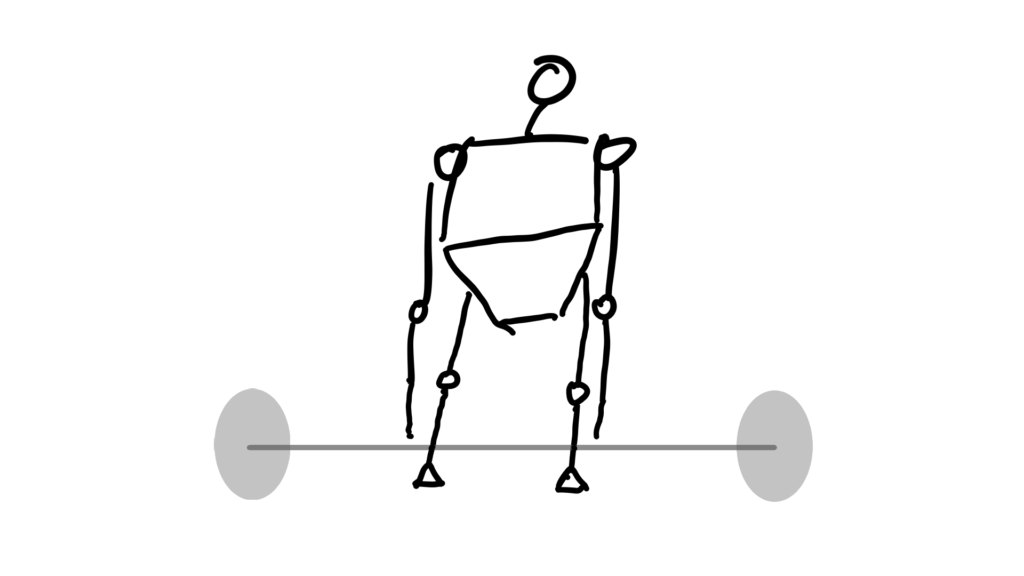
Fixing Your Deadlift
1) Fix knee alignment
If your knee hurts, first try to fix your knee position.
Feet stay flat
If your knees are coming too far forward, it places a little extra tension on the kneecap. Sometimes this can be enough to cause problems.
Film your deadlift and watch your feet very closely. Look mainly for a foot collapse where the arch flattens onto the ground. Keep the foot steady as you push through the heels.
Hip-knee-ankle inline
If your knee is caving inward, you’ll need to think about pushing this caved knee outward.
2) Fix hip shifting
Now what if the knee looks aligned, but still hurts? Try looking around the knee at the foot and the hip.
Often times we trace knee issues back to the hips, back, and feet… and I have even traced a few back to the shoulders.
Hips twisting
Line them back up like headlights pointing at the road and try again! It’s difficult to hang onto, but if you go slow and lower the weight, you may be able to do it.
Side shifting
Or you could be shifting your hips to one side…
That’s just an example. If you haven’t found the fix yet, scan through my series on fixing the deadlift.
3) Start from scratch
You may even just need a total overhaul. Here’s a three-video series I did on learning the deadlift.
Modify the Plan
Okay, now we’ve fixed your knees and hips, but you’re still having issues. What do we fix now?
Why are you deadlifting?
First, we have to talk about your goals. What are you hoping to get out of the deadlift?
Do you want muscle?
Do you want strength?
Are you just trying to fit?
Are you competing in powerlifting?
This might come as a surprise, but maybe this exercise just isn’t right for your at this time. Did you sleep five hours last night? That can make your knee hurt (or more likely to hurt if you want to be technical).
Most of those goals can be accomplished without deadlifting. There are plenty of people who don’t tolerate heavy deadlifts. What do they do instead to get big, strong, and fit?
Try single leg exercise
Whenever knees are the issue in lower body exercise, I’m likely to try a single leg exercise, like split squats, step ups, and lunging variations.
Your knee has a little more space to play with in these exercises, and loading one leg at a time makes it easy to really train that leg even if you’re stuck at home without a bunch of weights. Enter muscle growth phase.
You’ll also get the added bonus of balancing out some of your asymmetries. These exercises are highly underutilized by the “I found a program on the internet” crowd.
Switch up your workouts
Sometimes we get stuck chasing what we want so bad that we forget about the bigger picture of training. We spend too much time TESTING our abilities rather than TRAINING them.
If you’ve been on the same 5×5 strength program for four months, then it’s probably a good time to take a month off of that and try something else. Do something metabolically taxing, perhaps (see nutrition section below).
Stress Management
Now, though I love good technique, I need to tell you a secret: sometimes it ain’t enough.
Even just in the last week, I’ve seen people deadlift with some terrible back positions. They’re not too concerned about it. They feel fine. And in my years of coaching, I’ve also seen people with near-perfect technique who are still in pain. It doesn’t line up with what makes sense. Good form is supposed to fix these things!
I still like to start with cuing, but I have a progression of other coaching tips just in case that doesn’t work.
What is stress?
It’s something that pushes you away from status quo. We break stress up into branches: physical, physiological, and psychological.
Examples of physical stressors are waking up, working on your feet all day, working in a chair all day, or a hard training session.
Examples of physiological stressors are working a graveyard shift, children waking you up three times a night, getting sick, or a hard training session.
Examples of psychological stressors are looming deadlines, long nights at the office, a changed daily routine, or working through lunch.
It’s easy to think that hard training will lead to success, but I liken it to elephants balancing on a seesaw; you may occasionally find balance, but when things go wrong, they go very wrong.
Sleep
Sleep is when your body recovers. It refills the tank of fuel that deals with stress. It keeps your hormones optimally balanced. It helps you recover from your tough workouts. And it heals injured joints.
If possible, sleep at minimum seven uninterrupted hours a night.
Nutrition
Some are more susceptible to food issues than others. And it isn’t always just “eat less McDonald’s”. Some people are sensitive to even seemingly innocuous vegetables!
If you’re frequently constipated or have diarrhea, prioritize this one. Try an elimination diet and see what foods are causing you the most issues.
If you just tend to overeat often, maybe you need a month of cutting weight to lower your inflammation.
Mental health
Anxiety and depression absolutely dominate some people. And they can be really tough to treat.
Be honest with yourself. If you need help, please please please go get help. You can’t recover from your hard training if you’re worried and sad the other 23 hours of the day.
Hire a professional
I realize that if you found this post, you’re looking to solve the problem on your own.
If that doesn’t work, however, I encourage you to hire a tenured coach to take a look. Their practiced eye might notice something that you haven’t. Fix that issue and see if it clears up.
Summary
- If your knee hurts, look at your technique and fix any errors.
- If that doesn’t help, try single leg exercises or a month of new programming.
- If you’re stumped, get a coach to help you out.
Did you find this helpful? Leave a comment below and tell me to make more posts like this one!
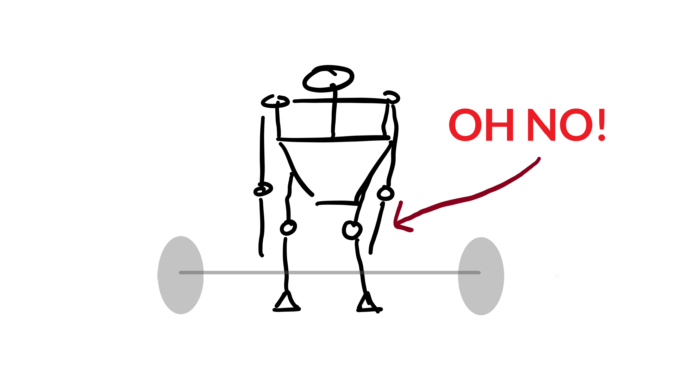



![[1/3] Learning the Deadlift - The Top](https://i.ytimg.com/vi/L-J7tIdJEfo/maxresdefault.jpg)
![[2/3] Learning the Deadlift - The Bottom](https://i.ytimg.com/vi/2IMrvfhut5g/maxresdefault.jpg)
![[3/3] Learning the Deadlift - The Middle](https://i.ytimg.com/vi/QlA_81zEO3c/maxresdefault.jpg)
Add some color to this commentary.